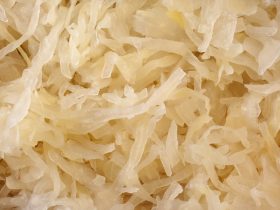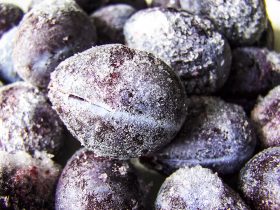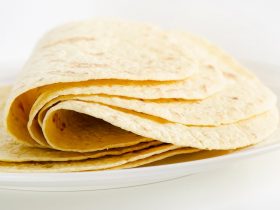The term salsa refers to a variety of dips or sauces utilized in Mexican cuisine, usually consisting of tomato and various other vegetables. Salsa may be served warm and cooked or simply as diced up vegetables and fruit, otherwise referred to as pico de gallo.
Owing to its organic produce-based ingredient matrix, salsa does not last very long if left out in the open and exposed to the elements. If so desired, restaurants and even home chefs may instead choose to preserve this Mexican sauce in order to prevent wasting it.
Salsa can be frozen, and holds up to it quite well, though this has one exception; pico de gallo type salsa may suffer from significant textural degradation after being removed from the freezer, essentially creating a slimy and unpleasant dip. The ideal form of salsa to be frozen is the blended or crushed type, with the tomatoes thoroughly processed so as to prevent cellular damage from the formation of ice crystals.
Why Should You Freeze Salsa?
Because salsa mainly consists of organic produce, it is likely that bacteria and fungi will quickly begin to colonize them when left in the wrong conditions, especially that of the average kitchen or dining room. Heat, humidity and light are all excellent motivators for the formation of microbial life, of which will release toxic compounds harmful to the human body as they consume the salsa.
Even in the event that the salsa has somehow not spoiled in the length of time that it has been left at room temperature, it is likely that the quality will have degraded somewhat owing to oxidation and exposure to heat.

The best way to prevent these things from occurring is to store the salsa in a way that it becomes both inhospitable to microbiological life as well as insulated from damaging environmental conditions.
Generally, it is best to freeze or refrigerate the salsa immediately if it is not being consumed, as even as short a time as two hours at temperatures between 40°F to 140°F can result in the salsa spoiling.
Is Salsa Affected by Freezing?
Generally, most forms of home made salsa or salsa which is bought already-cooked in a jar will freeze just fine, so long as the proper storage procedures are followed. This is due to the fact that the damaging effects of freezing do not affect foodstuffs that are sufficiently mashed or blended, as the water in these dishes is already separated from the solid portion of the food.
However, if the salsa is “chunky” or otherwise contains bits of unprocessed vegetables such as onions and tomato, it is likely that the texture of these vegetable pieces will degrade significantly as the water within the plant cells expands and crystallizes, rupturing the food at a cellular and macro level.
Instead, it is best to refrigerate chunky salsa or pico de gallo instead of freezing it, in order to best preserve their top quality.
How Long Does Salsa Last in the Fridge instead?
The exact length of time that salsa remains safe to eat in the refrigerator depends on the nature of the sauce and whether it has been removed from its original container, if it was store-bought.
Generally, there is no need to keep salsa that is still present within its original jar or packaging, so long as it has not been previously opened and exposed to the open air.
Food manufacturing companies go to great lengths in order to ensure that their products are shelf-stable and can last as long as possible. They do this by sterilizing the jar, factory environment and even the salsa itself, apart from the addition of numerous preservatives that inhibit the growth of microbiological life.
Because of these factors, most forms of jarred salsa will last for up to two months, though it does not make a difference between whether it has been stored in the cupboard or in the refrigerator.
However, if the commercially jarred salsa has already been opened, it is best to store it in the refrigerator in the same container. If this is not possible, ensure that the new container it is moved to is made of a non-plastic or metallic material, as the acidity of salsa will both corrode the container and cause the salsa to absorb its particulates, altering the flavor.
Previously jarred salsa will last for up to two weeks in the refrigerator.
In the case of preserving home-made salsa, ensure that it is stored in a non-metallic or plastic container as well. Glass jars are the ideal storage vessel for this purpose, though the shelf-life of home-made salsa is relatively shorter than that of the commercial type, being only five to seven days.
How Long Does Salsa Last in the Freezer?
Home made salsa and commercially purchased salsa that has been exposed to the elements will last for up to two months once frozen, though certain factors may shorten this length of time, such as how long the salsa has been at room temperature prior to freezing.
Salsa must also be stored in an appropriately air-tight container, as being exposed to the harsh temperature of the freezer’s air will cause freezer burn, which will shorten the shelf-life of salsa, though not due to microbial reasons.
What Do You Need to Freeze Salsa?
In order to freeze salsa, all that is needed is a container slightly larger than the total volume of the salsa being stored. This container must also be made of a material that will not interact with the acidic tomato juice, as metallic containers may leach their flavor into the salsa, and plastic containers may absorb the salsa’s color and smell.
A freezer capable of reaching the temperature of 32°F or below will also be needed.
How to Freeze Salsa
To freeze salsa, first allow it to cool to room temperature if you have just finished cooking or reheating it. This step is done in order to prevent the formation of ice crystals within the freezer, of which steam will condensate both within the container and along the walls of the freezer.
Pour the now cooled salsa in a sufficiently large container. The container must have some space between the surface of the salsa and the container, as the liquid portions of the salsa will expand once frozen, potentially damaging the container if it is too small.
Place the container of salsa in the deepest portion of your freezer, far from any fans or freezer vents, of which may cause freezer burn, affecting the quality of the salsa.
The container of salsa will keep at its best quality in the freezer for up to two months. It is possible that the salsa will still be edible after this time, though its general quality may have begun to grade.
How to Defrost Salsa
In order to defrost your salsa, either place it in a pot on the stove with the heat set to its lowest setting or allow it to warm up in the refrigerator overnight.
The difference between these two methods is based on whether the salsa is intended to be heated or not. If your salsa is meant to be served unheated or otherwise has incorporated ingredients that do not hold up well to the process of cooking, it is best to allow the container to defrost overnight in the refrigerator.
However, if this is too long a length of time, you may place the air-tight container in a bowl of room temperature water, changing out the water every twenty minutes or until the salsa has thawed.
References
1. Sharon Hudgins, “Salsa” in Andrew F. Smith, ed., Oxford Companion to American Food and Drink, 2009, ISBN 0195387090
2. Unknown Author. (June 2017) “”Danger Zone” (40 °F – 140 °F)” U.S. Department of Agriculture Food Safety and Inspection Service





Hi, I'm Dom
Dom Eats was started to help other people fall in love with food. While cooking can feel intimidating, it doesn't have to be.